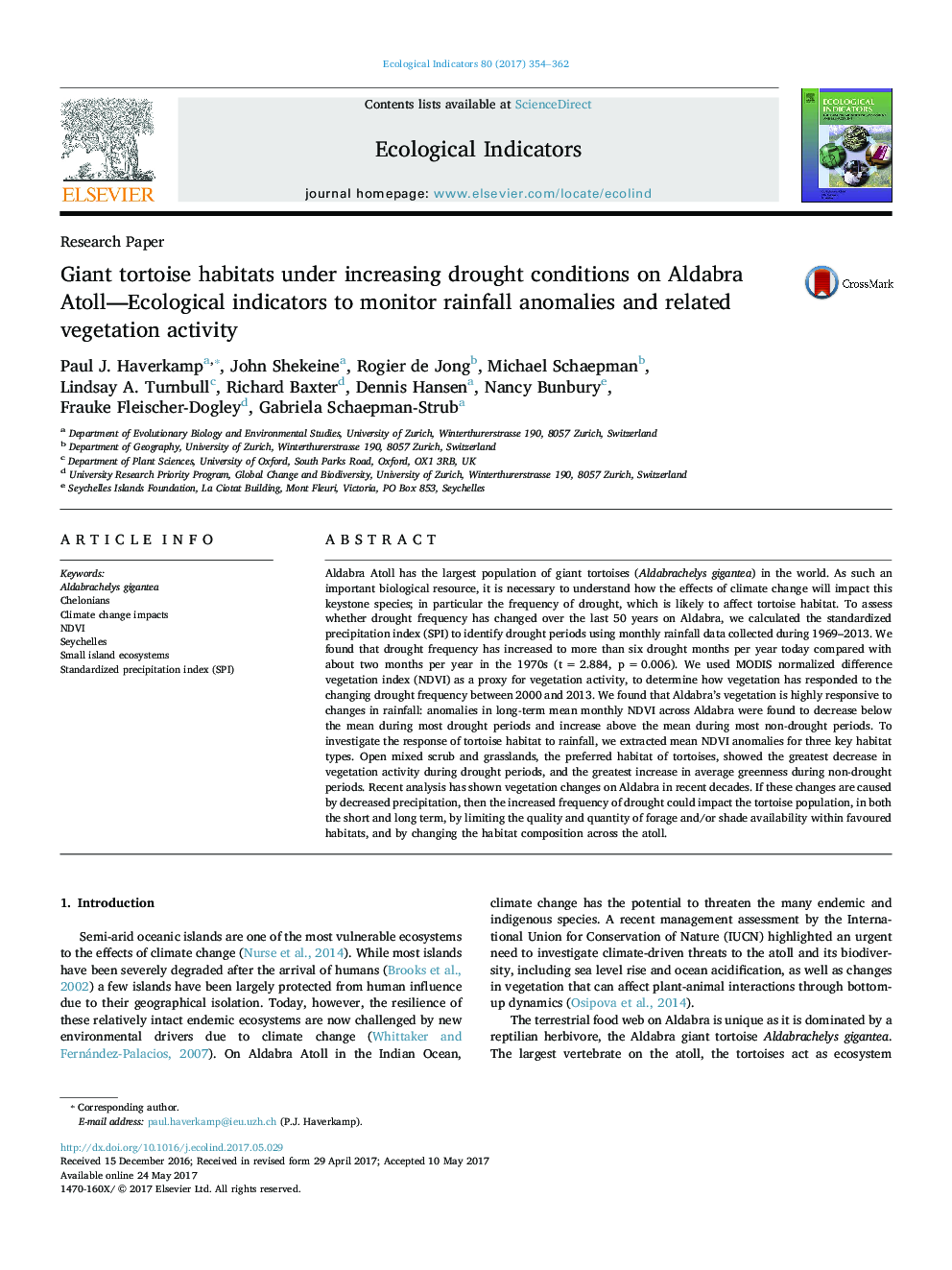| کد مقاله | کد نشریه | سال انتشار | مقاله انگلیسی | نسخه تمام متن |
|---|---|---|---|---|
| 5741398 | 1617122 | 2017 | 9 صفحه PDF | دانلود رایگان |
- Drought months per year have significantly increased from 1969 to 2013 on Aldabra.
- Vegetation activity follows drought patterns at a five-month lag.
- Aldabra rainfall anomalies can be used as an indicator of tortoise resources.
- Preferred habitats of giant tortoises respond strongly to drought.
- Increased drought frequency potentially leads to decreased vegetation recovery.
Aldabra Atoll has the largest population of giant tortoises (Aldabrachelys gigantea) in the world. As such an important biological resource, it is necessary to understand how the effects of climate change will impact this keystone species; in particular the frequency of drought, which is likely to affect tortoise habitat. To assess whether drought frequency has changed over the last 50 years on Aldabra, we calculated the standardized precipitation index (SPI) to identify drought periods using monthly rainfall data collected during 1969-2013. We found that drought frequency has increased to more than six drought months per year today compared with about two months per year in the 1970s (t = 2.884, p = 0.006). We used MODIS normalized difference vegetation index (NDVI) as a proxy for vegetation activity, to determine how vegetation has responded to the changing drought frequency between 2000 and 2013. We found that Aldabra's vegetation is highly responsive to changes in rainfall: anomalies in long-term mean monthly NDVI across Aldabra were found to decrease below the mean during most drought periods and increase above the mean during most non-drought periods. To investigate the response of tortoise habitat to rainfall, we extracted mean NDVI anomalies for three key habitat types. Open mixed scrub and grasslands, the preferred habitat of tortoises, showed the greatest decrease in vegetation activity during drought periods, and the greatest increase in average greenness during non-drought periods. Recent analysis has shown vegetation changes on Aldabra in recent decades. If these changes are caused by decreased precipitation, then the increased frequency of drought could impact the tortoise population, in both the short and long term, by limiting the quality and quantity of forage and/or shade availability within favoured habitats, and by changing the habitat composition across the atoll.
Journal: Ecological Indicators - Volume 80, September 2017, Pages 354-362
